And yes, it IS, for the most part men, not women who created the structures that caught my attention on a visit to Kirkstall Abbey near Leeds.

I’d visited the abbey twice before and had enjoyed the quiet ambiance of this spot, selected around 1100AD because of its proximity to running water, plenty of fish, good arable land and quarries that could provide the stone for the buildings. Monks were vegetarians – except they could eat fish.
I got the bus out to Kirkstall after spending the morning in the Henry Moore Gallery and Leeds Art Gallery and Museum. Until this year the entrance to the abbey had always been free and the man in the visitors’ shop apologised for having to charge me an entrance fee! It’s still free to Leeds residents.
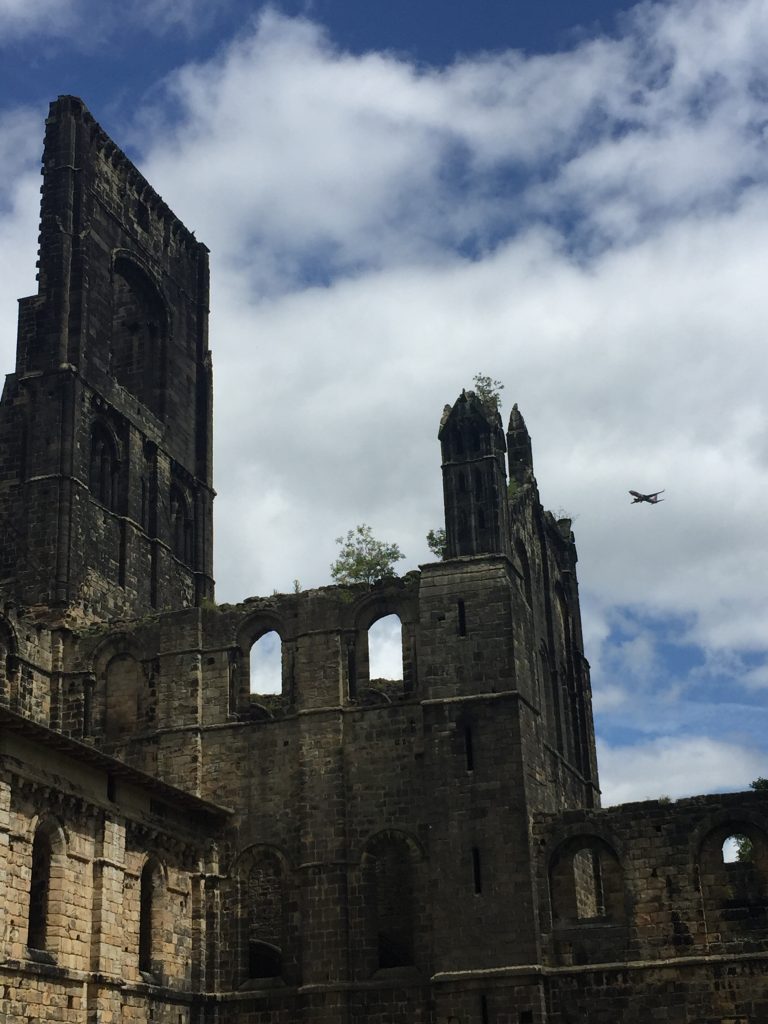
One thousand years separates the abbey from the plane
The visitors’ centre man then added, “There’s a tour just about to start. Would you like to join it?” “Yes, please.” And so I stepped outside and was welcomed by Trevor. All the others in the group were from North Carolina, and it was taken for granted that I was American too. Well, with an accent like mine and a jacket sporting ‘San Diego’ on it, no wonder. All the people were highly knowledgable about medieval history and architecture asking interesting questions which Trevor enjoyed.
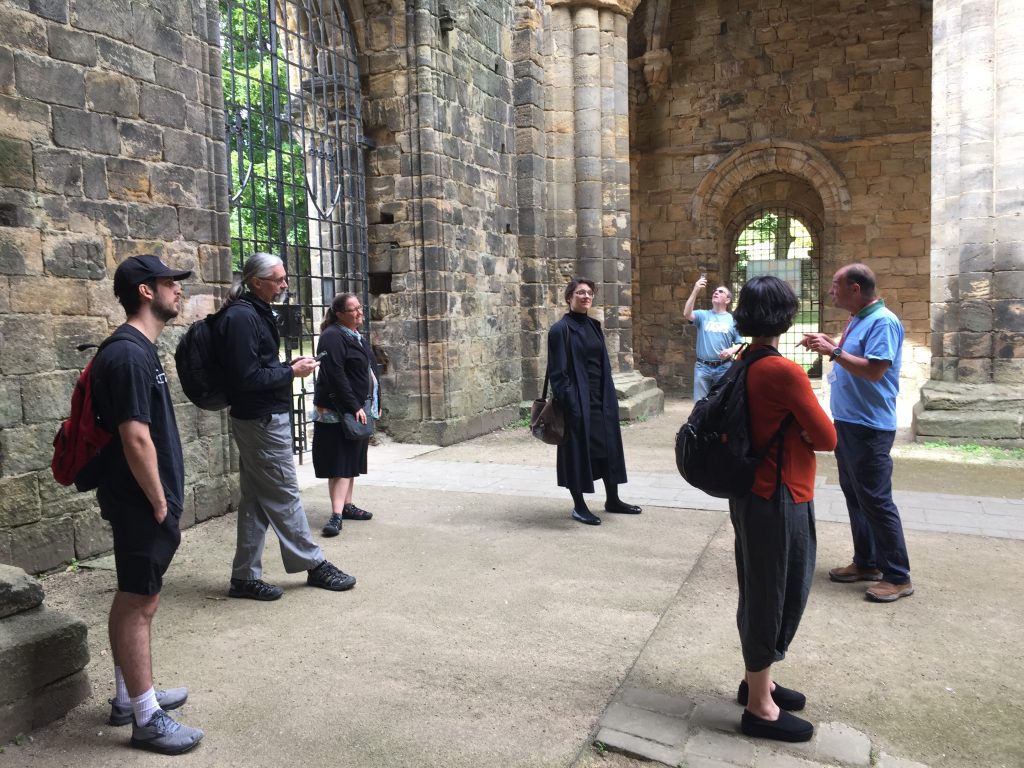
I always find it difficult to comprehend that such intricate magnificent buildings were constructed so long ago. At Kirkstall Abbey I particularly like the wonderful shapes created by the weathering of the millstone grit, and the green coloured shades of stone created by the lichen in the damp climate. Trevor pointed out a door. Dead monks were wrapped in a simple shroud and pushed through the door – hence the phrase ‘death’s door.’ In a time of primogeniture when a man’s possessions would pass on to his first born son subsequent sons had to learn skills and one way in which this could be provided would be to have them join an abbey as a child where they would be instructed in both farming skills and book learning – and Latin would be taught.
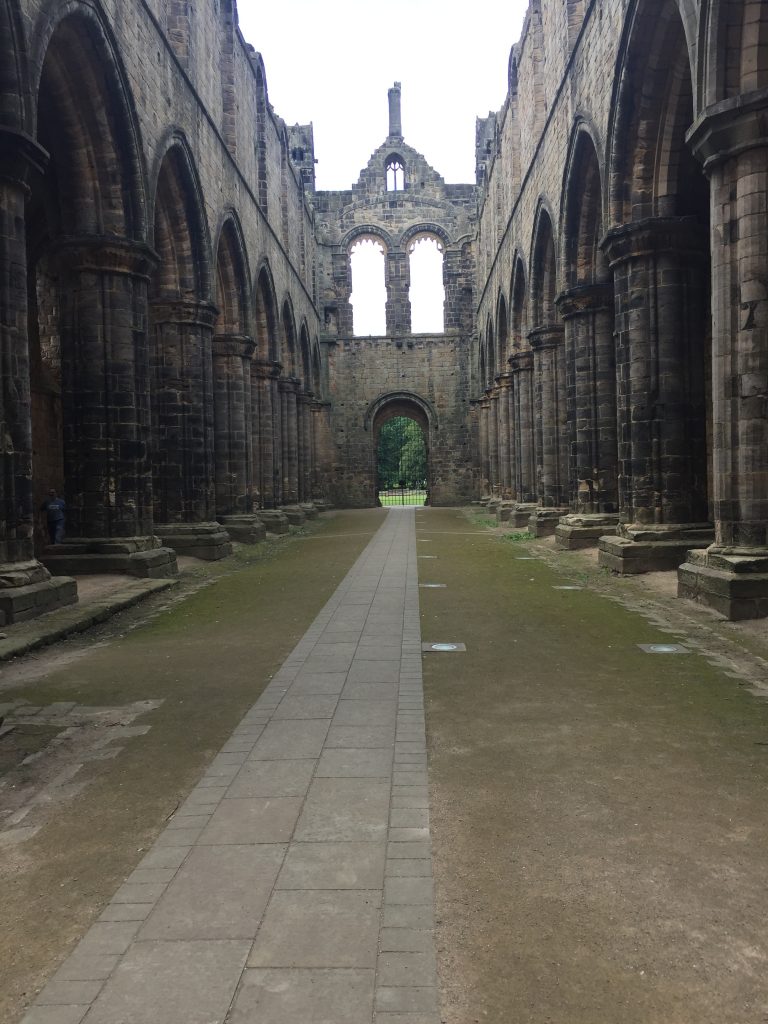
When the monasteries were closed and ‘dissolved’ in the 1540’s when Henry Vlll broke away from Catholicism and founded the Church of England Kirkstall Abbey was looted and abandoned. Until the modern main road was constructed in the 1820s the main road ran directly through the church and is marked by the paved road in the centre of this photo! Several of the ancient pillars on either side of the gate shows damage caused by passing horses and carts.
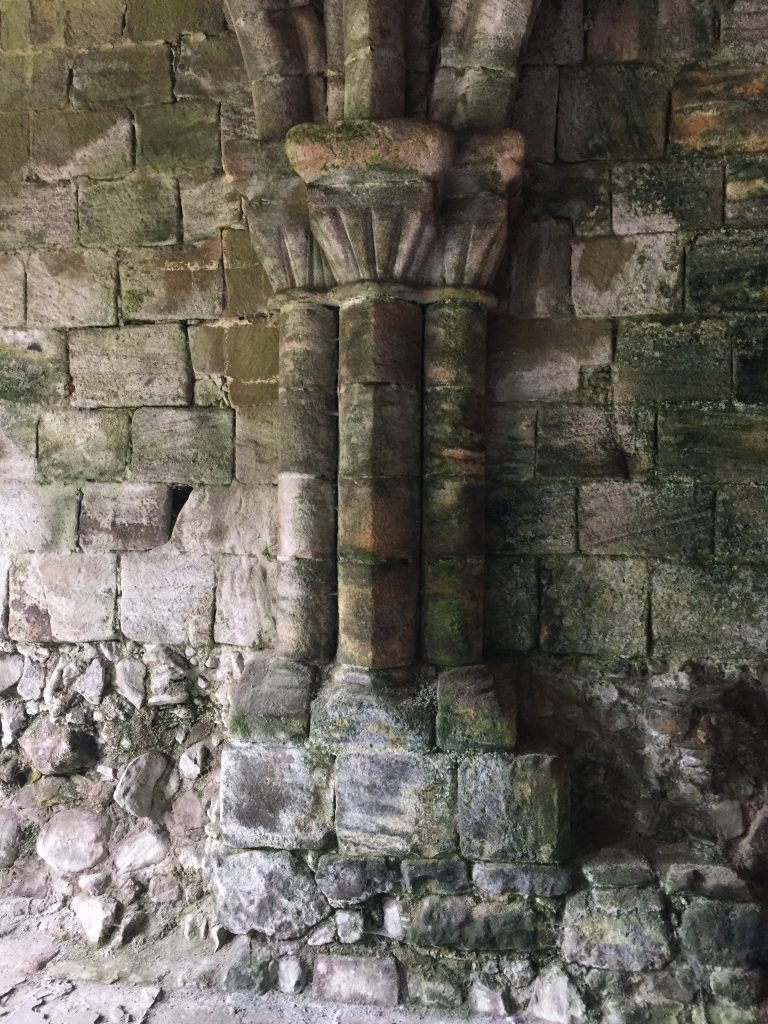
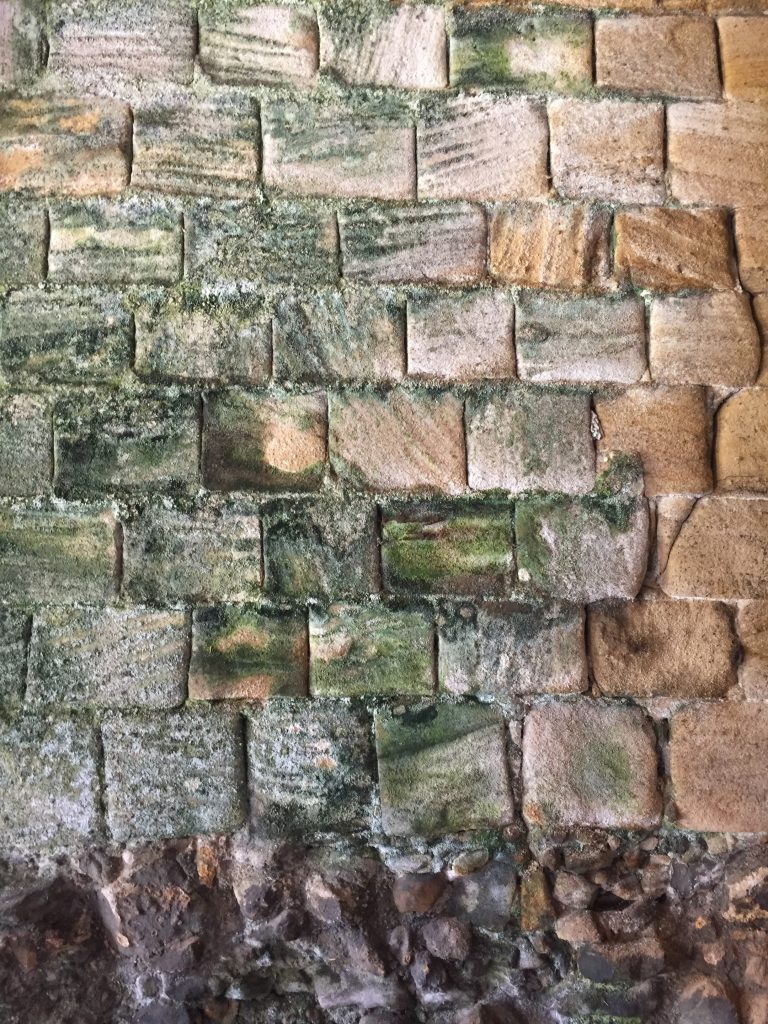
One of the abbots had his own private quarters up stairs that still exist and he had two fireplaces, whereas the monks were only allowed to sit by the fire in the communal space for 15 minutes per day. But sometimes the abbot got up to no good and had to ask for pardon from the Pope. Sending word to Rome and getting a response took an entire year in which time the abbot was held in a tiny room, imprisoned – without a fire.
Leaving the abbey, passing a friendly ladybird I asked Trevor for directions for walking along the canal back into Leeds. What had begun as a dull day weatherwise had turned into bright sunlight and I was overdressed for the heat. It took me an hour and a half to walk back in to Leeds and I was grateful for the intermittent trees along the canal providing me with shelter from the direct sun.
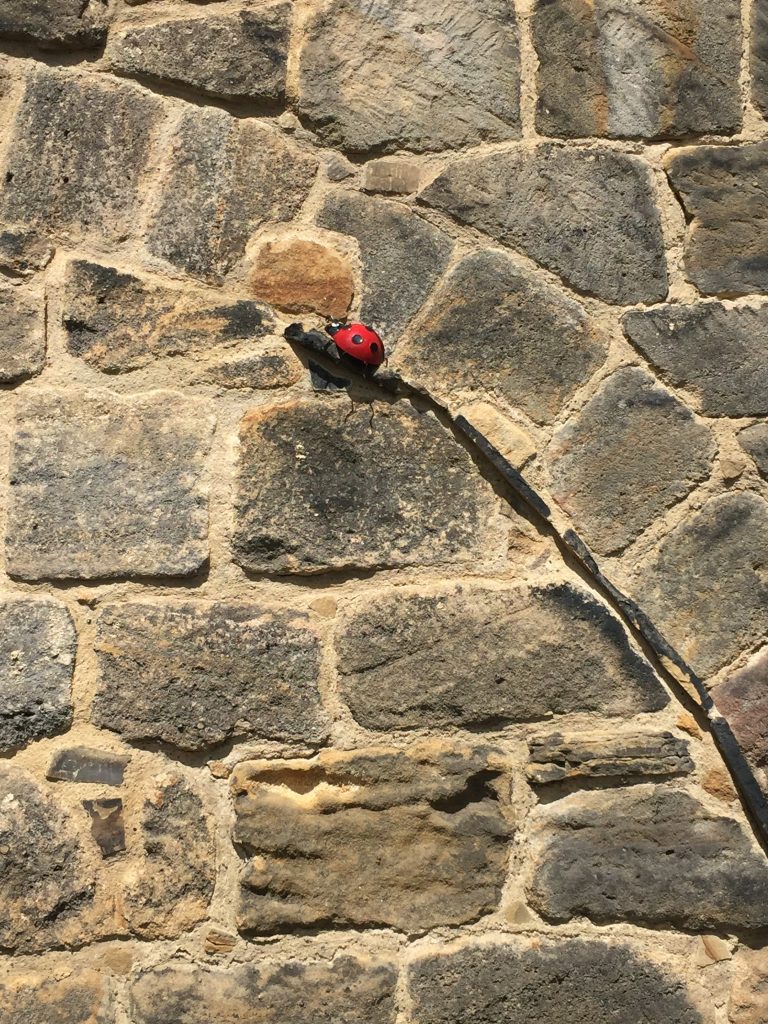
When I saw the mile markers along the towpath I was glad I was heading to Leeds rather than Liverpool.
Several of the bridges and abandoned mills along the towpath had wonderful colourful street art, something that I often enjoy, reminding me of the wonderful work in some of the tunnels on the Donner Pass railway in California.
For the first couple of miles I had the towpath to myself but as I neared Leeds it became more populated as people were walking home from work. Eventually the huge cranes which dominate the skyline of both Leeds and Manchester at the moment came into view.

As I stopped to take a photo of two swans and their 7 cygnets floating majestically towards me another photographer crouched down to take a photo of the family. No sooner had he knelt than one of the swans came over to investigate. The photographer didn’t flinch at all as it tried had to pull his jacket into the canal.

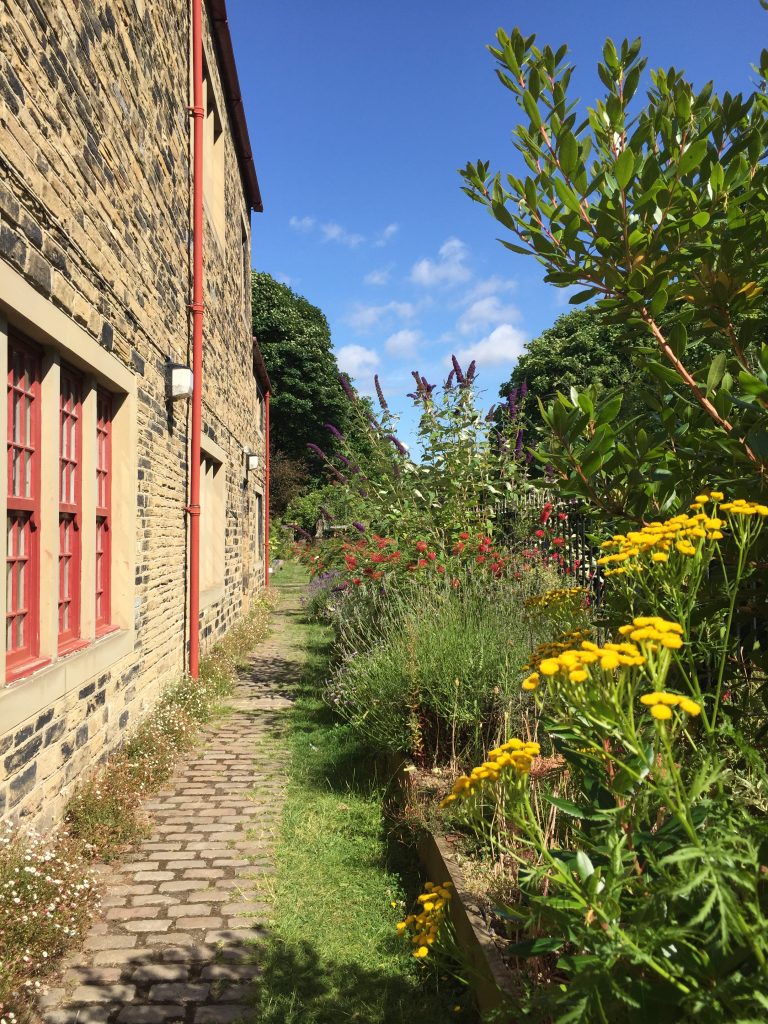
I passed the Leeds industrial Museum house in a former mill, with a beautiful colour garden leading to the entrance from the towpath. I peeked in and decided it would be a good place to visit, but it was just about to close for the day.
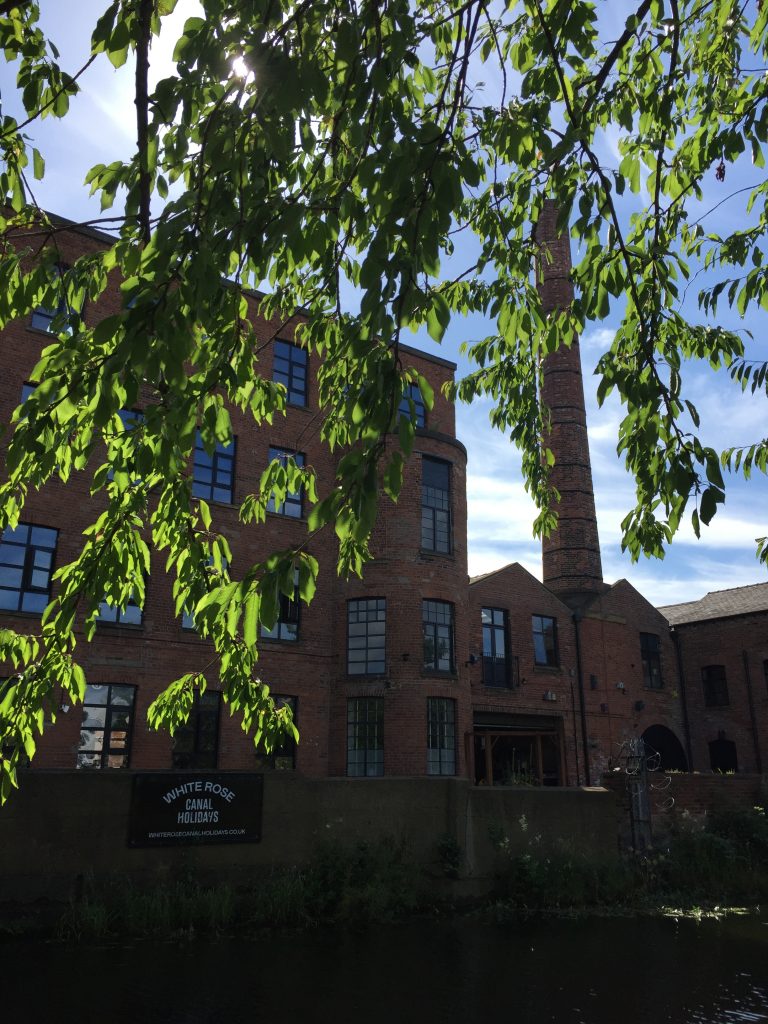
I soon found myself in the midst of huge mills now converted into elegant apartments. The canal led me straight to a tubular building that I’d often seen from the train. Apartments above but at ground level was a craft beer place called Salt. It provided a welcome glass of ale at an outdoor table from where I could see many canal barges juxtaposed with the converted mills and newly constructed high rise buildings – man’s imprint on the landscape.
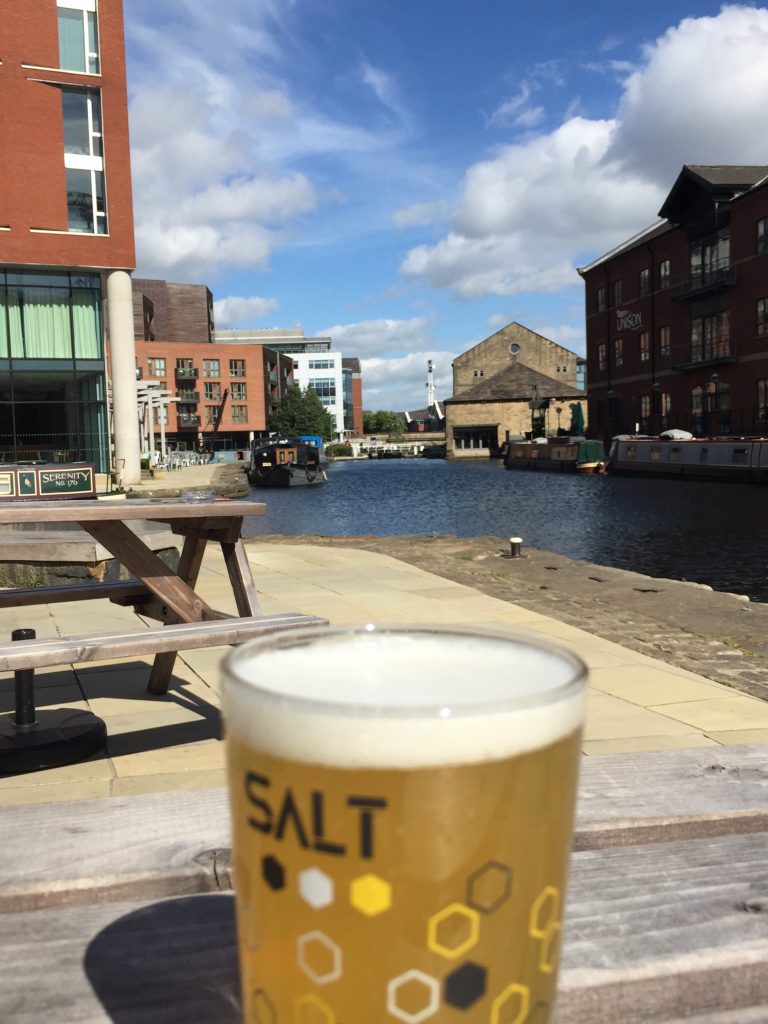
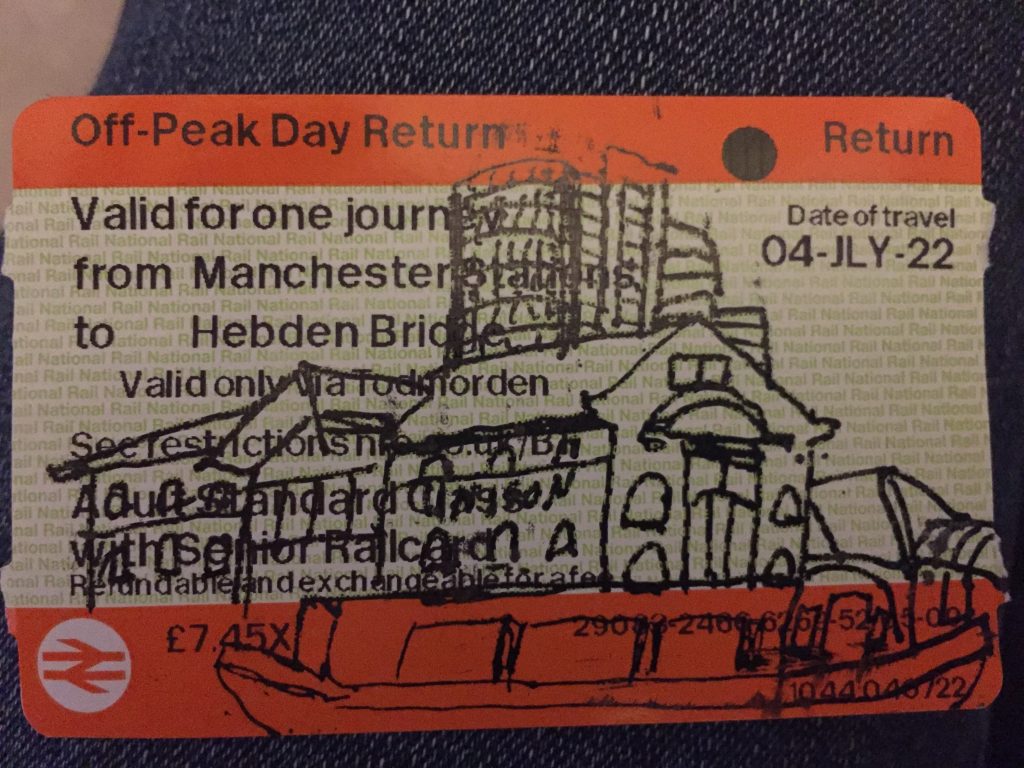
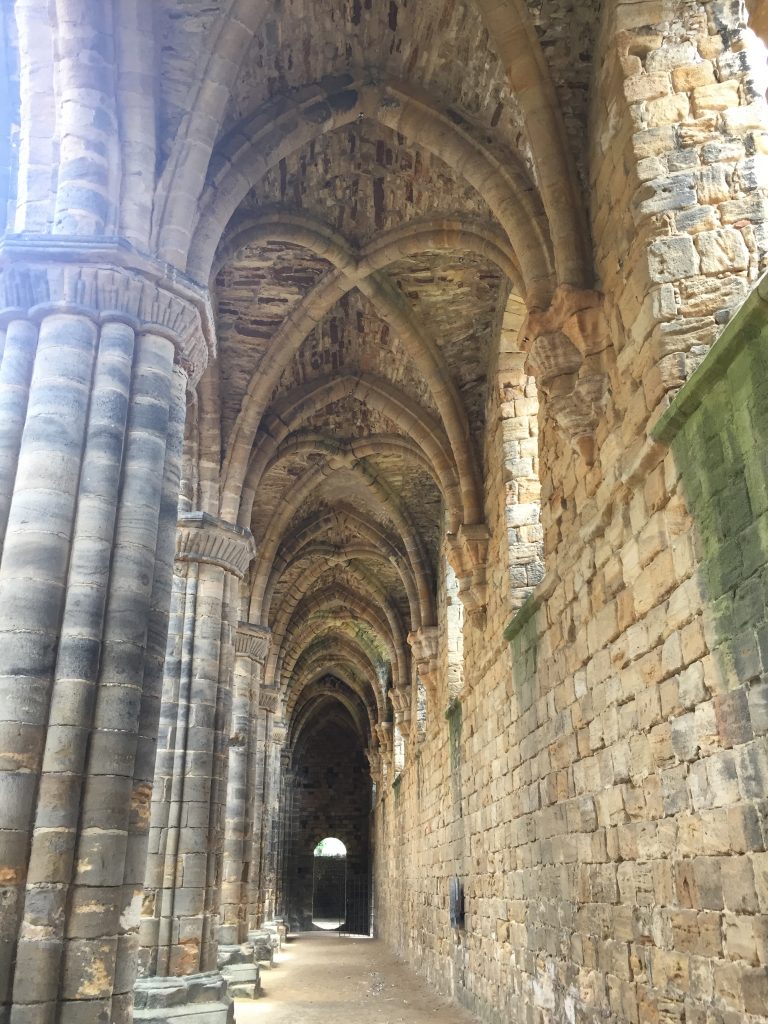
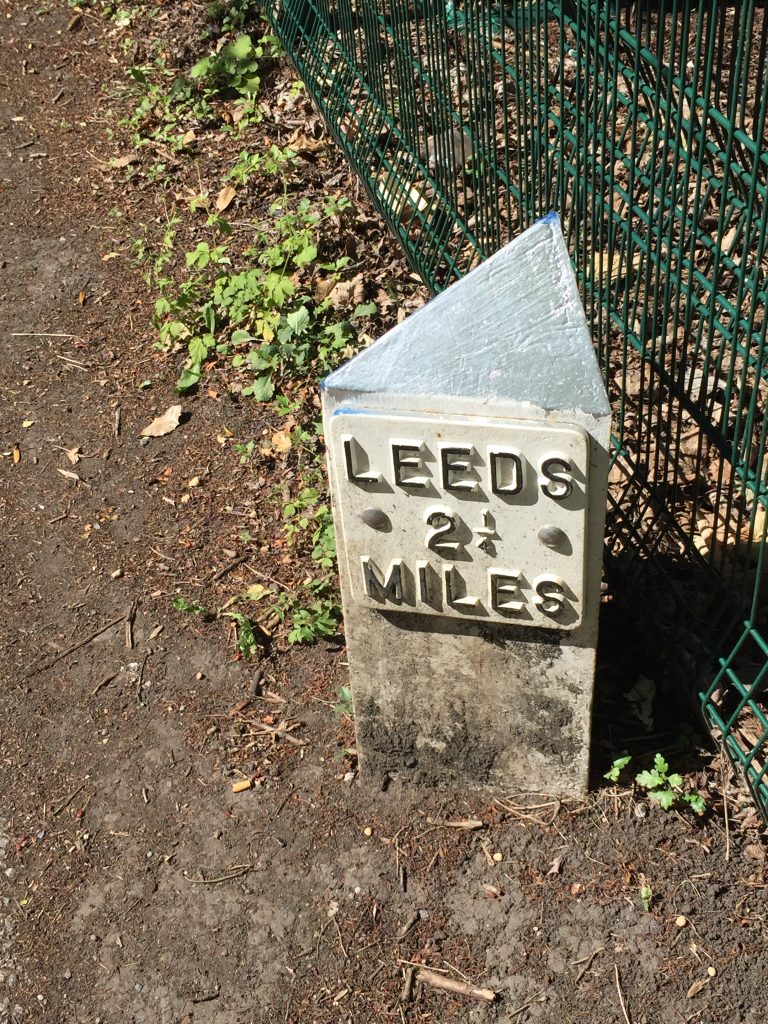

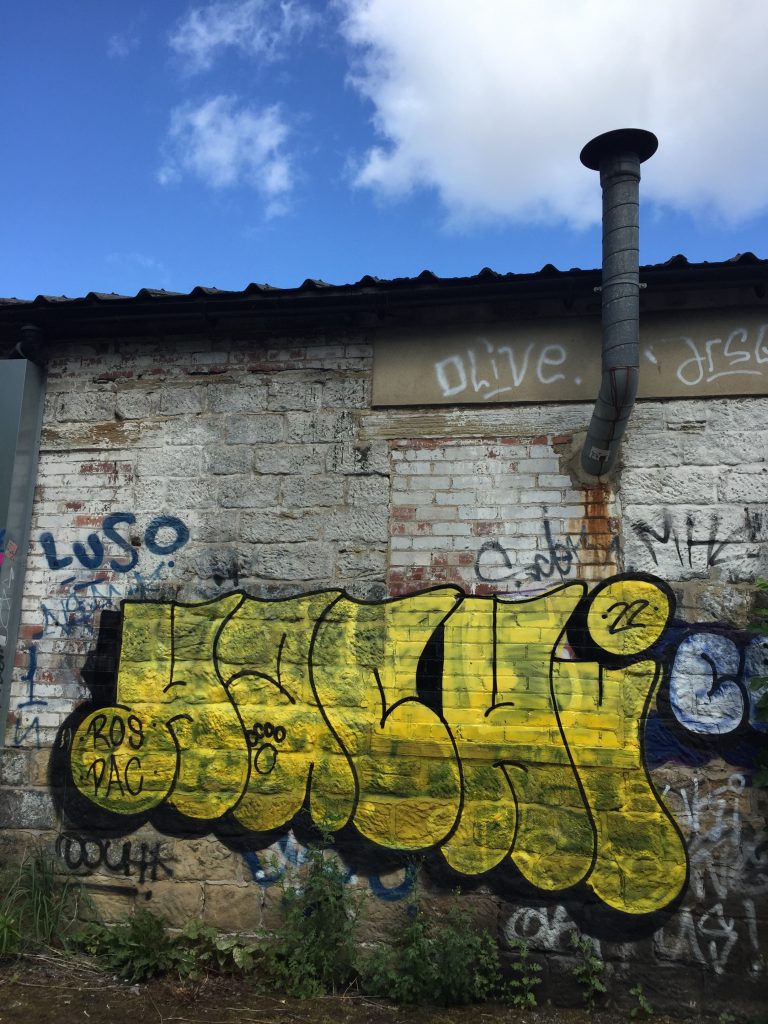
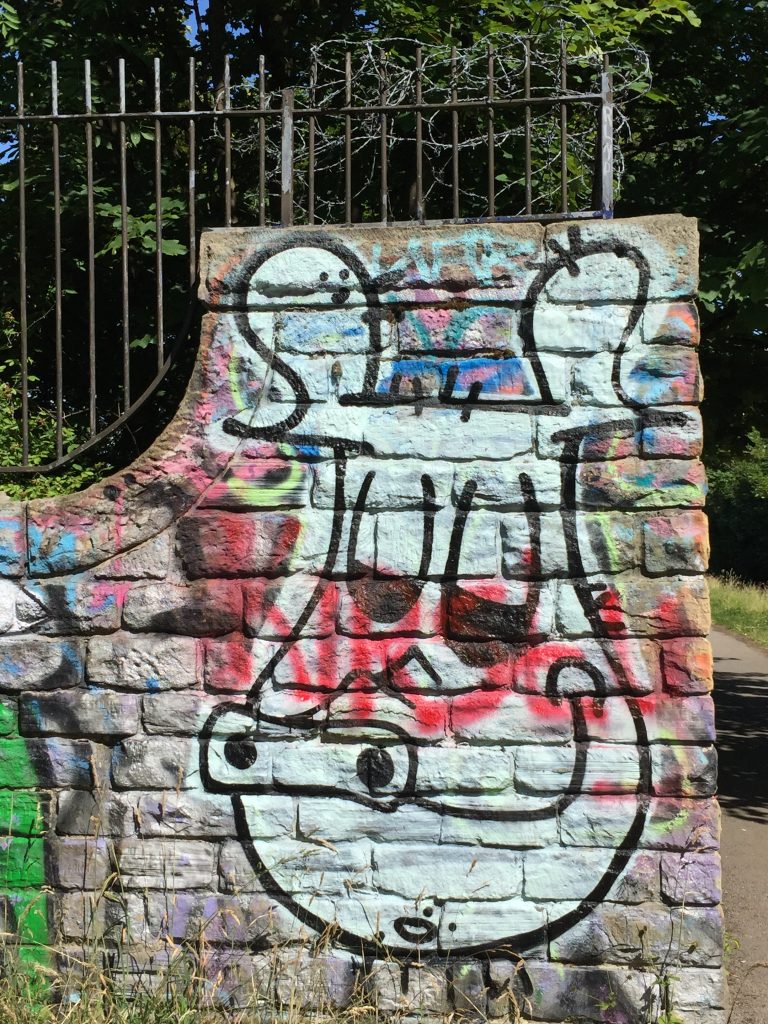
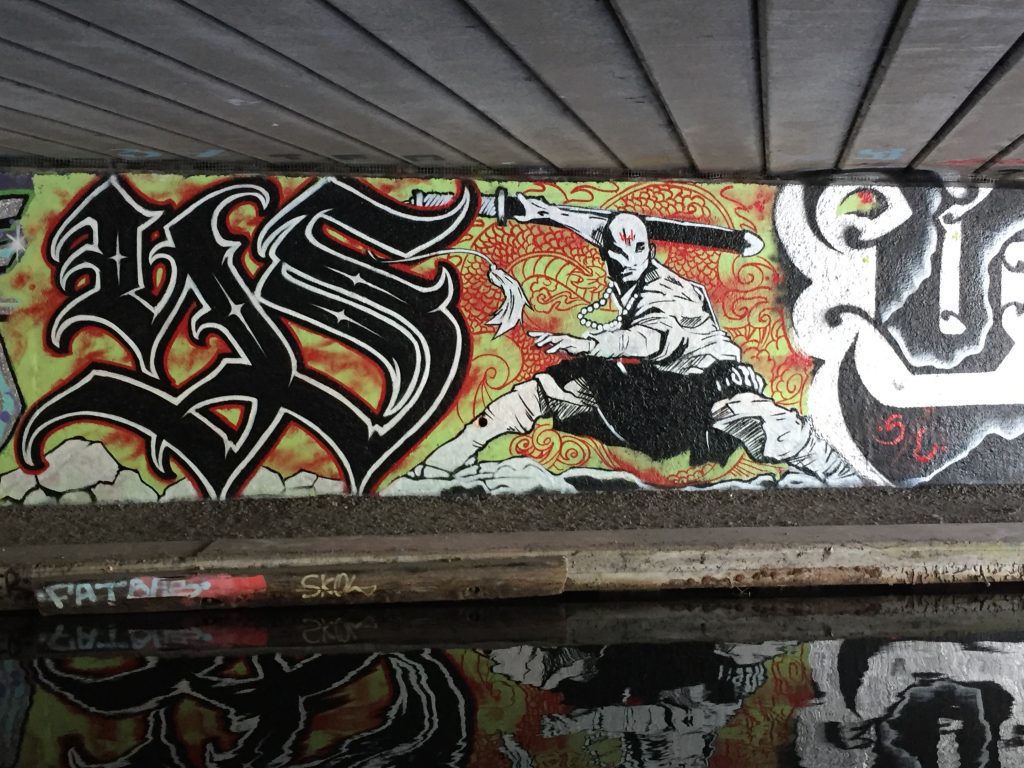
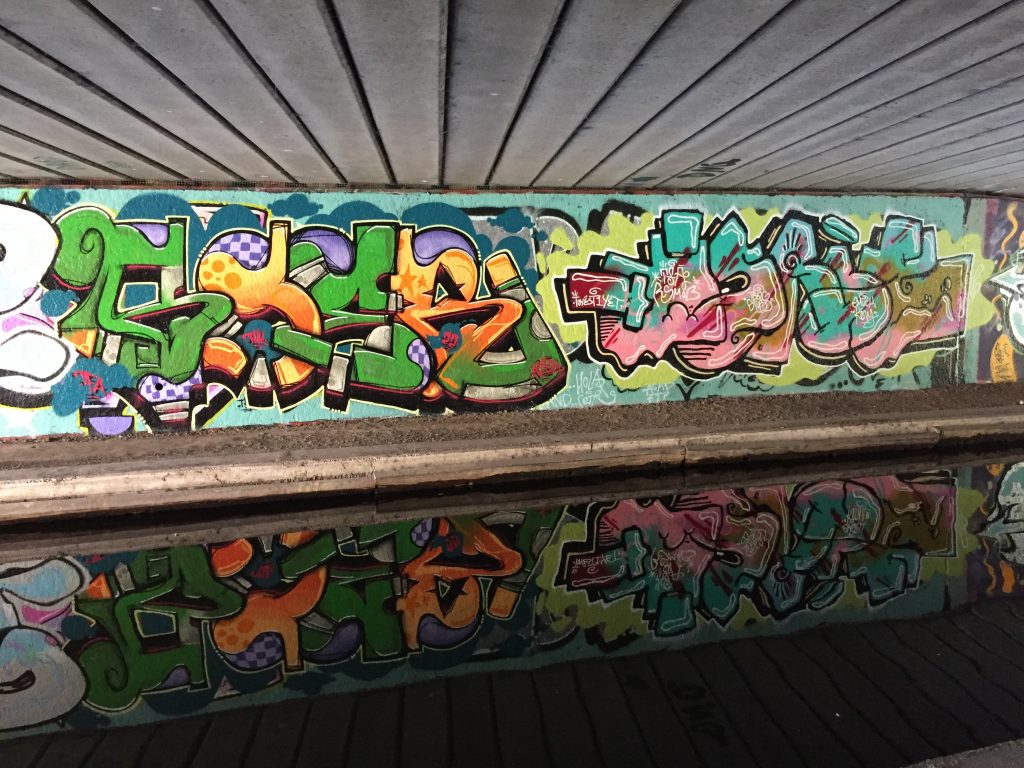
Leave a Reply